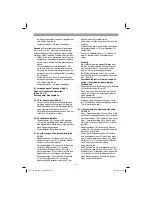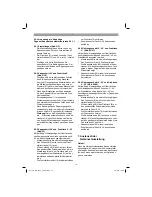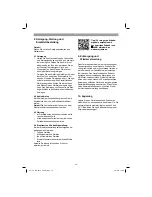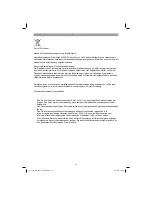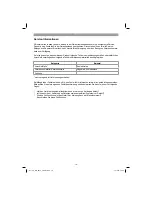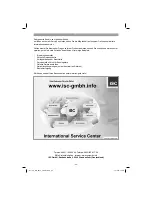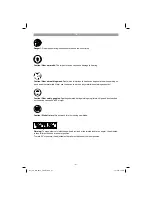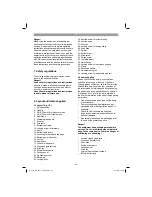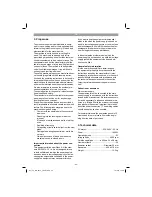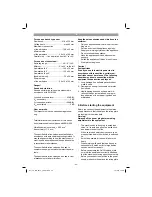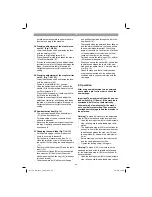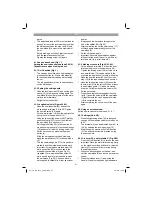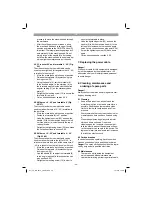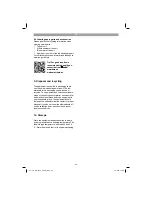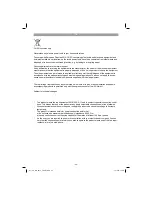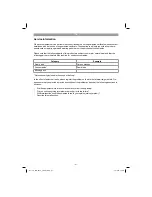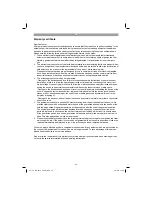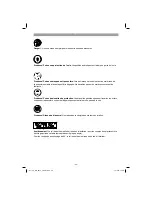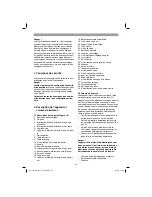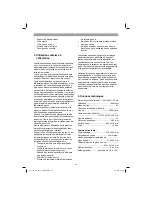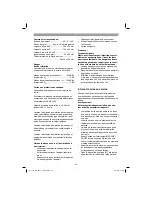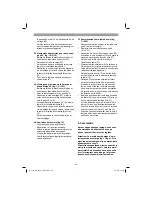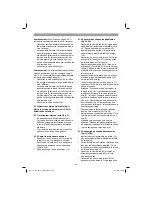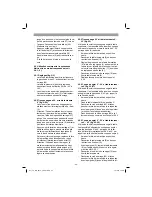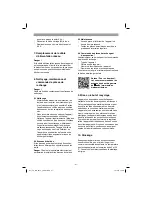
GB
- 28 -
pressure to move the machine head through
the workpiece.
•
After the cutting process is finished, bring
the machine head back to its upper (home)
position and release the ON/OFF button (3).
Important. The integral resetting springs will
automatically lift the machine head. Do not
simply let go of the handle (2) after cutting,
but allow the machine head to rise slowly, ap-
plying slight counterpressure as it does so.
6.2.3 Crosscut 90° and turntable 0°- 45° (Fig.
25)
The crosscut and miter saw with table can be
used to make right and left angular cuts of 0°- 45°
in relation to the stop rail.
•
Move the machine head to its upper position.
•
Release the turntable (8) by slackening the
locking screw (10).
•
Using the handle (2), set the turntable (8)
to the desired angle, i.e. the marking (a) on
the turntable must coincide with the desired
angular setting (11) on the stationary base
plate (9).
•
Retighten the locking screw (10) to secure the
turntable (8) in place.
•
Cut as described under section 6.2.2.
6.2.4 Miter cut 0°- 45° and turntable 0° (Fig.
26/27)
The crosscut and miter saw with table can be
used to make miter cuts of 0° - 45° in relation to
the work face.
•
Move the machine head to its upper position.
•
Fasten the turntable (8) in 0° position.
•
Undo the tightening screw (22) and use the
handle (2) to tilt the machine head to the left
until the pointer (b) coincides with the requi-
red angle value.
•
Retighten the tightening screw (22) and make
the cut as described in section 6.2.2.
6.2.5 Miter cut 0°- 45° and turntable 0°- 45°
(Fig. 25-28)
The crosscut and miter saw with table can be
used to make miter cuts to the left of 0°- 45° in
relation to the work face and, at the same time, 0°
- 45° in relation to the stop rail (double miter cut).
•
Move the machine head to its upper position.
•
Release the turntable (8) by slackening the
locking screw (10).
•
Use the handle (2) to adjust the turntable (8)
to the angle required (in this connection see
also section 6.2.3).
•
Retighten the locking screw (10) in order to
secure the turntable in place.
•
Undo the tightening screw (22) and use the
handle (2) to tilt the machine head (4) to the
left until it coincides with the required angle
value (in this connection see also point 6.2.4).
•
Screw the tightening screw (22) back down
again.
•
Cut as described under section 6.2.2.
7. Replacing the power cable
Danger!
If the power cable for this equipment is damaged,
it must be replaced by the manufacturer or its
after-sales service or similarly trained personnel
to avoid danger.
8. Cleaning, maintenance and
ordering of spare parts
Danger!
Always pull out the mains power plug before star-
ting any cleaning work.
8.1 Cleaning
•
Keep all safety devices, air vents and the
motor housing free of dirt and dust as far as
possible. Wipe the equipment with a clean
cloth or blow it with compressed air at low
pressure.
•
We recommend that you clean the device im-
mediately each time you have finished using
it.
•
Clean the equipment regularly with a moist
cloth and some soft soap. Do not use
cleaning agents or solvents; these could at-
tack the plastic parts of the equipment. Ensu-
re that no water can seep into the device. The
ingress of water into an electric tool increases
the risk of an electric shock.
8.2 Carbon brushes
In case of excessive sparking, have the carbon
brushes checked only by a quali
fi
ed electrician.
Danger!
The carbon brushes should not be repla-
ced by anyone but a quali
fi
ed electrician.
8.3 Maintenance
•
There are no parts inside the equipment
which require additional maintenance.
•
Lubricate all moving parts at regular intervals.
Anl_TC_MS_2513_T_SPK1.indb 28
Anl_TC_MS_2513_T_SPK1.indb 28
13.10.15 13:26
13.10.15 13:26

